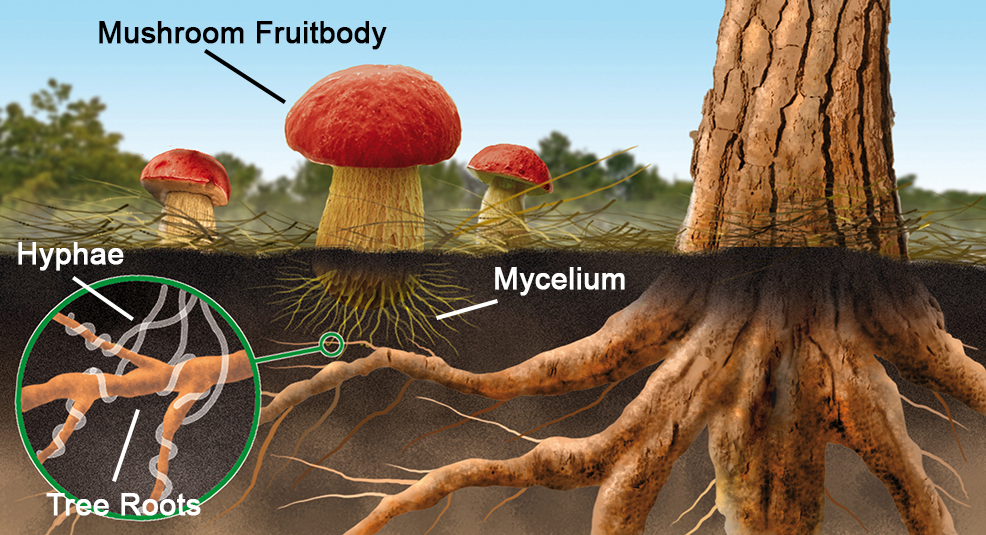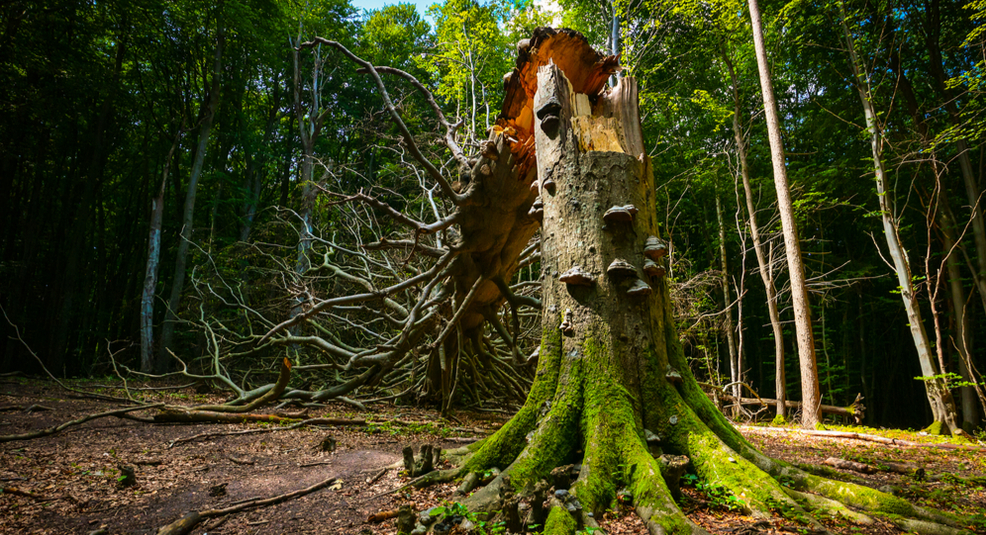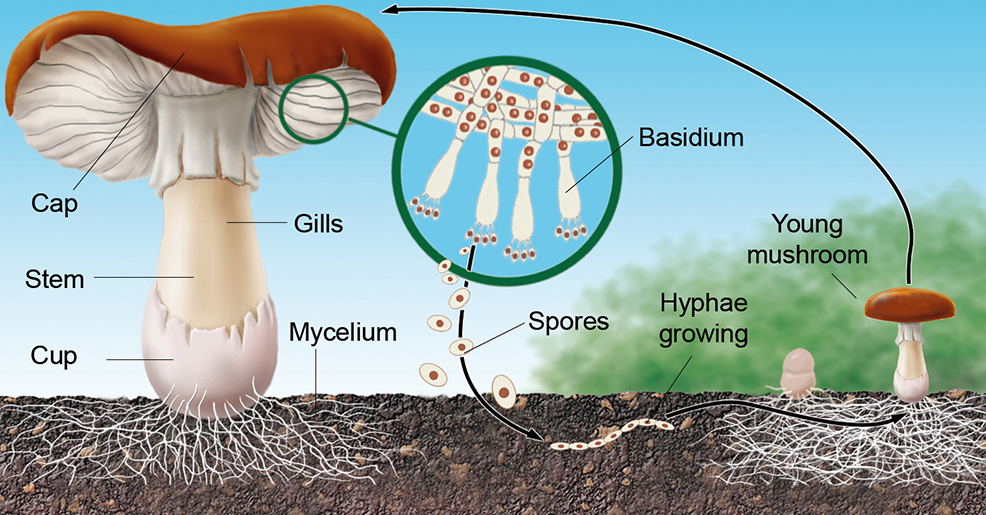Mycology: The Study Of Fungi
Overview
On a very basic, but incredibly crucial level, fungi break-down organic matter and transmute it into life-giving soil. As this planet evolved, fungi provided soil which propagated the plants and trees that produce much of the oxygen we breathe. The fungal kingdom in turn relies on plant species for survival in one way or another due to their synergistic connection to the mycelial network of the earth. From the first evolutionary symbiosis between algae and moss, to catalyzing the development of leafy plants and their ability to inhabit landscapes further inland, fungi have incorporated themselves strategically into the least energetically-taxing, but most beneficial, relationship with their ecosystem and the rest of nature.

Seemingly by design, fungi live in an interconnected world and exist as another mode of life on this planet. With a lack of physical gender (though thousands of sexes manifest within the mycological universe) and their stationary posture, fungi visually appear more related to plants than animals. However, utilization of oxygen for respiration, heterotrophic subsistence on organic material as opposed to photosynthesis, as well as a myriad of other abnormal similarities, make fungi more appropriately related to animals, though they are in their own kingdom entirely. It is a common misconception that fungi are merely the sprouted mushrooms (aka fruit bodies). Rather, fungi exist as a mass branching mycelial network of hyphae, constantly existing as an interconnected organism. In fact, fungi helped plants move from nutrient rich waters in the first place and onto a land environment, nutrient poor and torrid at the time. Working in an exchange for sugars and minerals, plants and fungi were able to set the stage for the animal kingdom to inherit lush, fertile landmasses.

Fungi predate land plants on this planet by about 600 million years. Whereas land plants have been around for about 700 million years, fungi have had fruiting structures (like prototaxites) above sea level for 1.3 billion years. Most fungal species people will ever encounter fall under the subkingdom Dikarya. It includes the two subdivisions Ascomycota (sac fungi including morels, truffles, brewer’s and baker’s yeast, and cup fungi) and Basidiomycota (mushrooms, puffballs, gasteroid fungi, polypores, jelly fungi, boletes, chanterelles, smuts/bunts, and other non-ascomycota yeasts).
Psilocybe cubensis is a species of psychoactive mushroom in the order Agaricales. As with all basidiomycetes, the life cycle for the species of the Psilocybe genus begins with dikaryotic mycelium forming a basidiocarp (a mushroom fruit body) the reproductive mode used when nutrients have become locally exhausted. Basidiospores (aka spores) are formed on a basidia, tiny structures that line the gills, pores, or other reproductive components of the basidiocarp, depending on the genus (Psilocybe species have gills). Once matured, these spores are dispersed, usually through air currents or animal intervention (whether ingested and excreted or simply brushed against). Under the right conditions, these spores germinate into haploid mycelia of thousands of sexes. This enables almost any pair of haploid mycelium that grow into contact with each other to fuse, creating the dikaryotic mycelium to start the process over. This of course only applies to haploid mycelia within the same species.

Fungi on the whole consist of millions of species and exist as a very elaborate network composed of uncountable amounts of root-like threads called mycelium. This mycelium is present in all living soil making them the most common organisms on earth. Fungi are not the only organisms that benefit from this connection: trees and plants communicate through and receive their nutrients from this mycelial network integration, as well as insects and other animals. Recent research shows that trees and plants can communicate through mycelium via electrical impulses and chemical exchange of nutrients and metabolites. Fungi can take away means of nutrients and networks just as easily as they provide them. However, without fungi, earth as we know it would not exist, as fungi are responsible for sustaining that which sustains us.
Organisms in the kingdom Fungi have often been referred to as chemical factories, as they are capable on the whole of synthesizing a vast array of molecules, ranging from medicine to poison, jet fuel, digestion enzymes and psychedelic compounds. The common archaeological conception of psilocybin-producing species is that it was an evolutionary development that led to an advantage as a defense mechanism, though that is still a topic of debate. There is much speculation and opinion that some kind of intelligent agent, perhaps an underlying theoretical “entity” or what our understanding of such a consciousness would constitute, is inherent to the psychoactive compound or even the mushroom itself. This further goes to suggest that one or the other was intentionally put on Earth (possibly as some form of galactic panspermia) as a tool or bridge of sorts; a means of communication across realities or paradigms. There is, however, a lack of tangible supporting evidence for fringe mystical elucidations from strictly scientific perspectives.